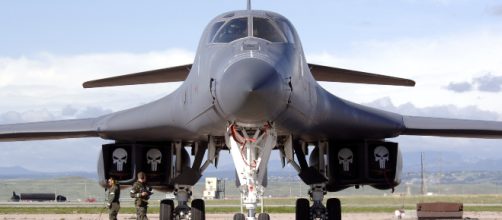The US Air Force (USAF) is about t receive its latest military upgrade. The USAF has just awarded a huge military contract to Northrop Grumman to beef up the Air Force’s electronic warfare capabilities. The Air Force made the announcement on July 30.
Under the new contract, the US-based Northrop Grumman, the company behind the iconic B-2 stealth strategic bomber, will provide advanced electronic warfare pods to the Air Force. The $44 million contracts, which will be the third production order to Northrop Grumman for the USAF’s Electronic Attack Pod Upgrade Program (EAPUP), is part of an existing military contract.
The massive upgrade is expected to increase the number of EAPUP systems in the Air Force fleet.
What the new contract will bring
The Electronic Attack Pod Upgrade Program is an upgraded, digital AN/ALQ-131 electronic pod that is designed to operate in the increasingly complex modern battlefield. This new EW technology will support a wide range of USAF’s aircraft, which include the C-130, F-15, F-16, and the deadly A-10 Warthog. The new technology is expected to replace the Air Force’s current EA inventory. The Air Force is currently facing increasingly fast-evolving threats in the dense electronic spectrum environments. The new EAPUP has been tested on a number of modern combat scenarios involving multiple, simultaneous advanced threats.
The tests were conducted to validate the system’s capabilities and combat readiness during a mission.
During the tests, the new electronic warfare pods performed successfully, demonstrating the ability to identify, locate and even counter the highly sophisticated threats in a hotly contested airspace. Brent Toland, Northrop Grumman VP for land and avionics C4ISR, said that the new electronic pods will provide USAF the protection and technology they need in the future battleground. Michelle Scarpella, general manager for Northrop Grumman global logistics and modernization program, said that the new technology will protect the USAF pilots and its allies from modern threats.
The EAPUP, which aims to deliver fifth-generation capability to the USAF’s fleet, features Northrop Grumman’s latest works in the advanced electronic warfare technology.
The Air Force has only 6 combat-ready B-1 bombers on its arsenal
In another defense-related story, the USAF has only 6 combat-ready B-1strategic bombers on its current inventory. At the recent Senate hearing, Gen. John Hyten confirmed that the US Air Force has only six fully mission-capable B-1 bombers on its arsenal. The Air Force’s aging fleet of B-1 bombers is currently in the midst of an intensive slate of maintenance works, the Air Force confirmed in the hearing. Of the 61 birds, 39 aircraft are on inspection for other technical issues, while 15 are in maintenance on aircraft hangar, according to South Dakota Senator Mike Rounds.
During the hearing, Gen. Hyten asked lawmakers to provide fresh funding for aircraft maintenance and fixing other technical issues.
The USAF has already grounded a number of B-1 strategic bombers due to ejection seat issues and after the wing of an aircraft from Dyess AFB caught fire during a training mission.
First introduced in October 1986, the B-1 Lancer is a supersonic variable-sweep wing strategic bomber. The Lancer was first developed by North American Rockwell/Rockwell International, which now owns by Boeing Company. This supersonic bomber was originally envisioned by the USAF as a platform that would combine the speed of the Convair B-58 Hustler bomber with the range and payload of the aging Boeing-built B-52 strategic bomber.
The bomber was formally entered into service in 1986 with the Air Force’s former Strategic Air Command (SAC) as a nuclear-capable strategic bomber.
However, after the Gulf War, and following the disestablishment of the SAC, the Lancer was converted to conventional bombing mission. The Lancer made its first real combat mission during Operation Desert Fox in 1998 and the NATO’s operation in Kosovo. The B-1 Lancer is expected to continue to serve the Air Force’s bombing fleet into the 2030s. The USAF plans to retire the B-1 Lancer by 2036.


